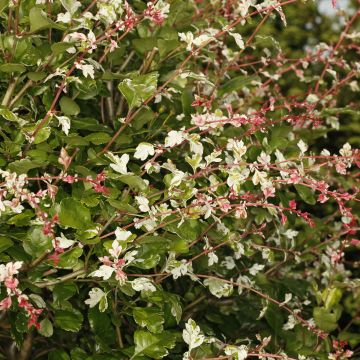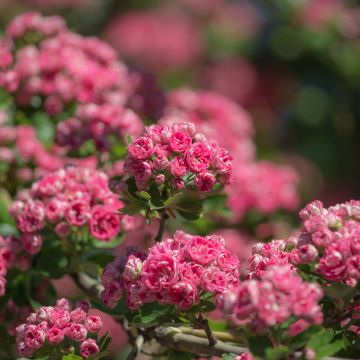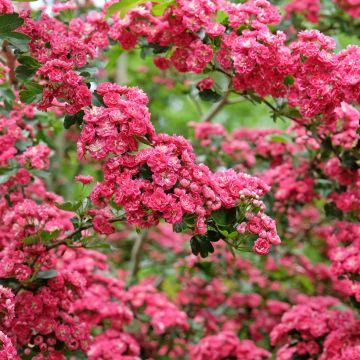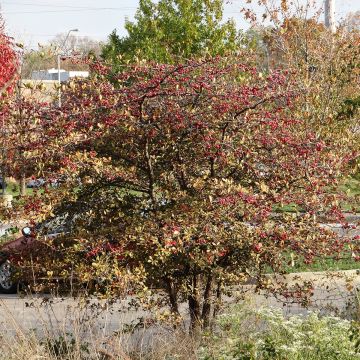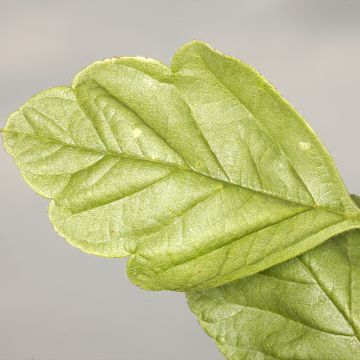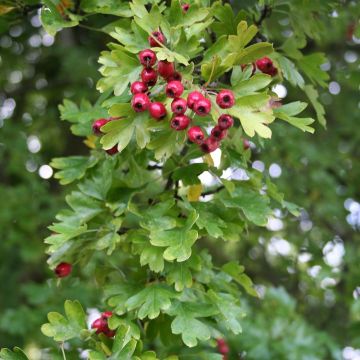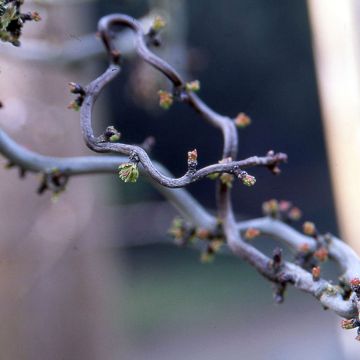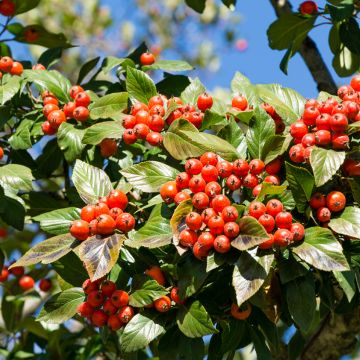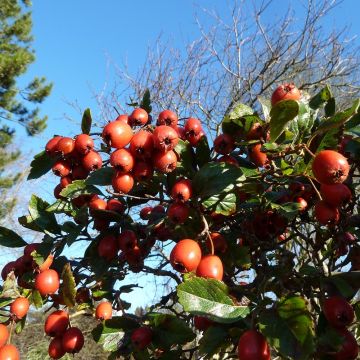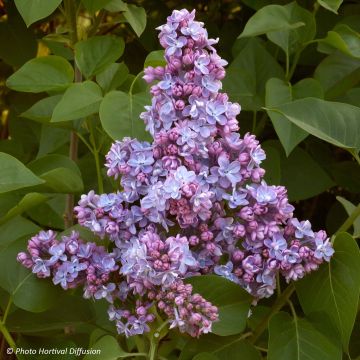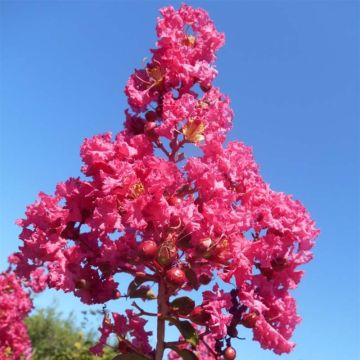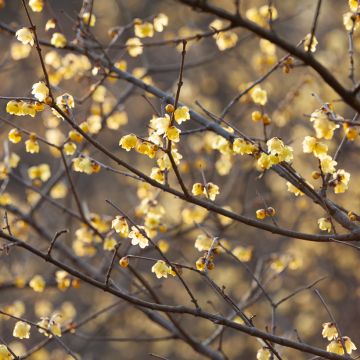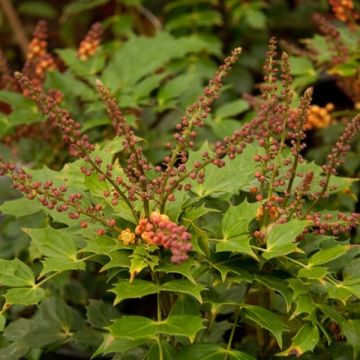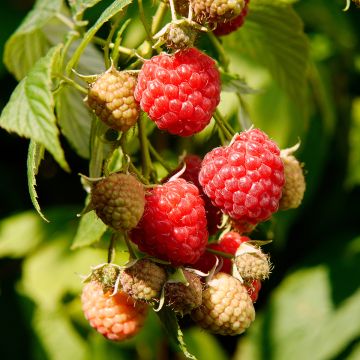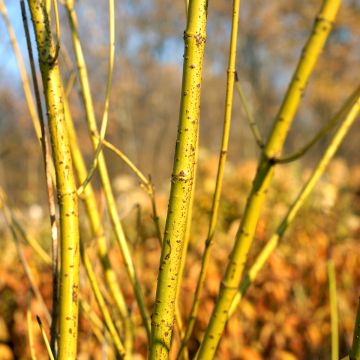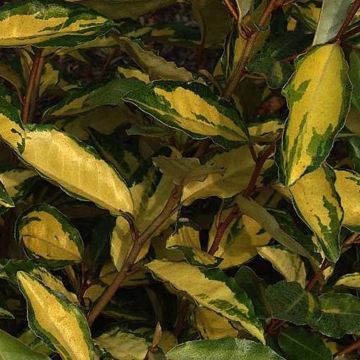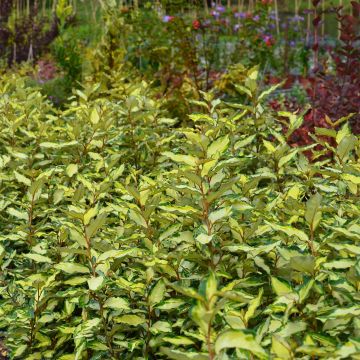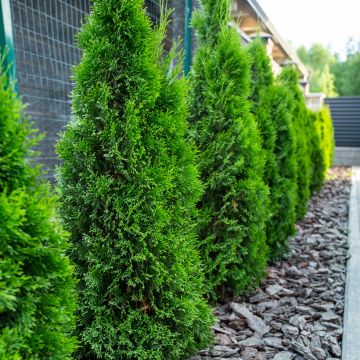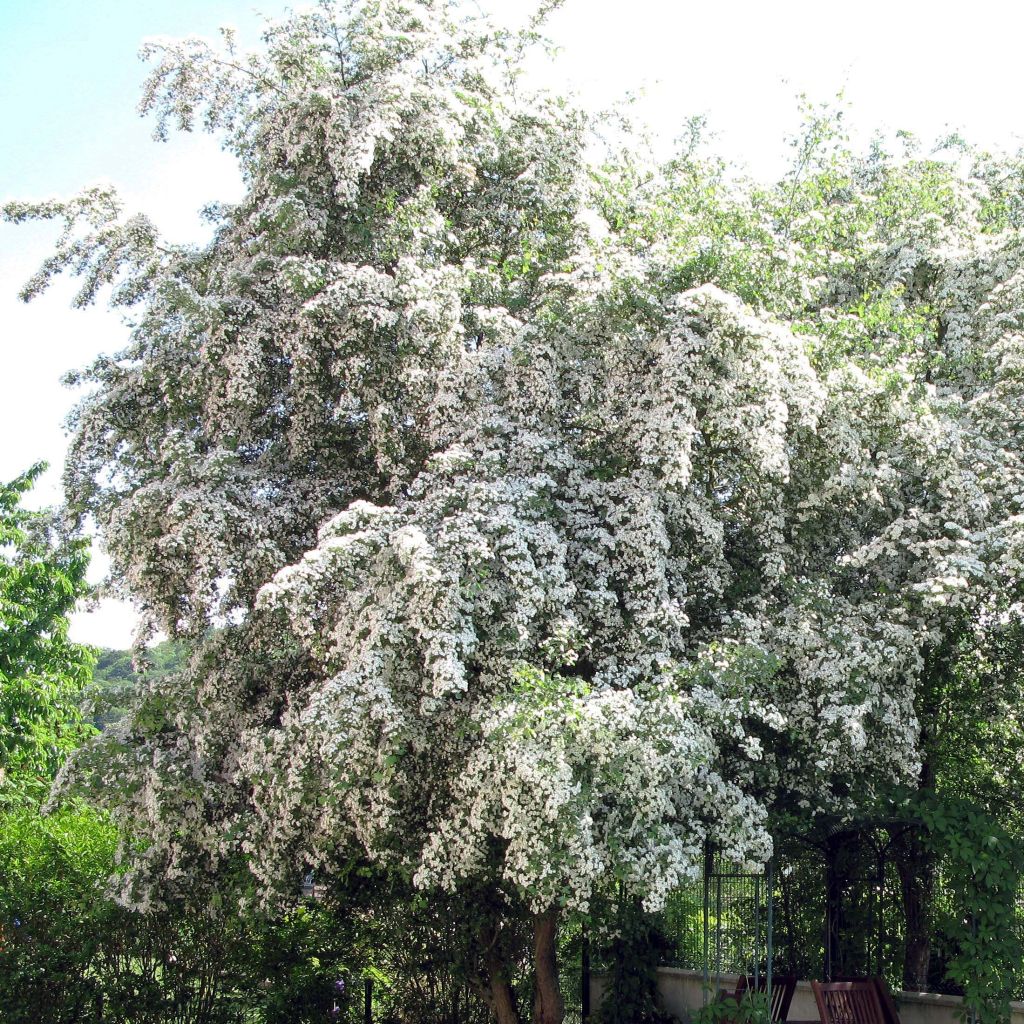

Crataegus monogyna - Hawthorn
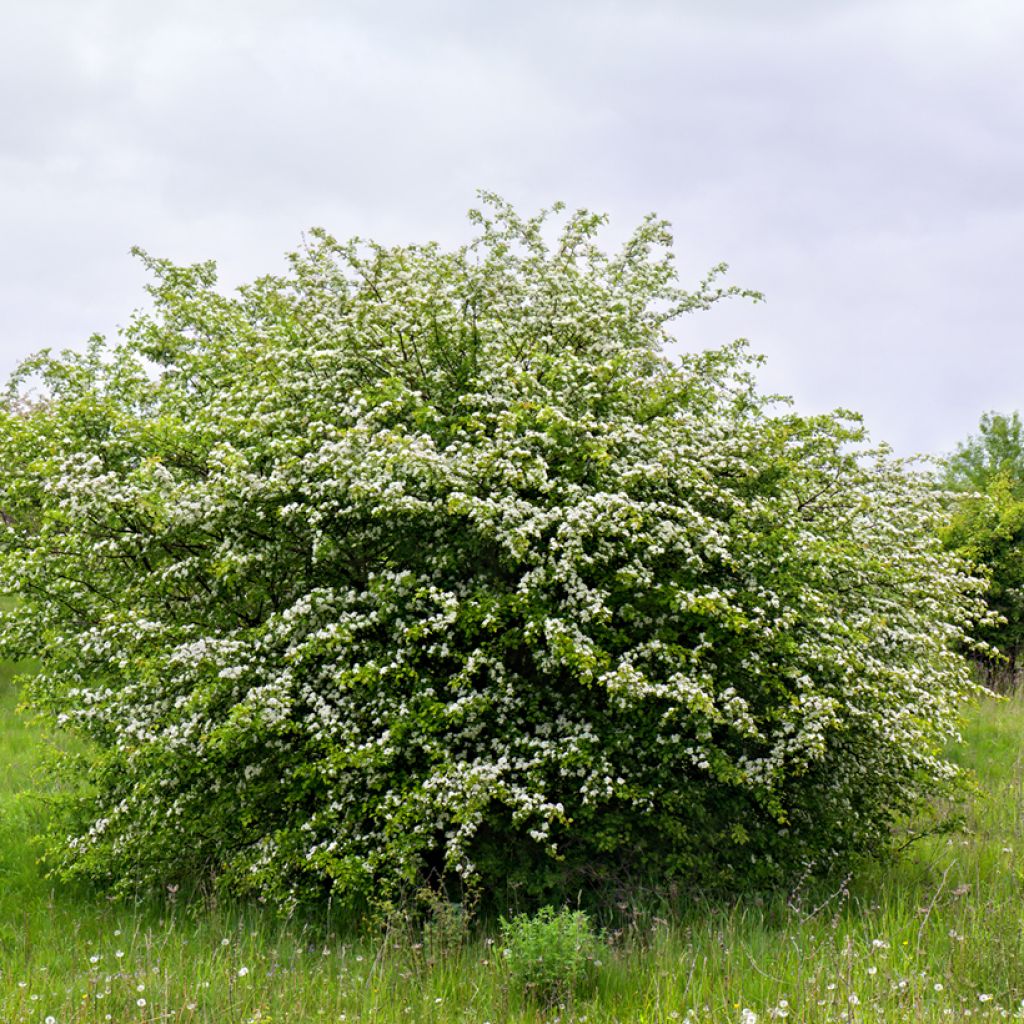

Crataegus monogyna - Hawthorn
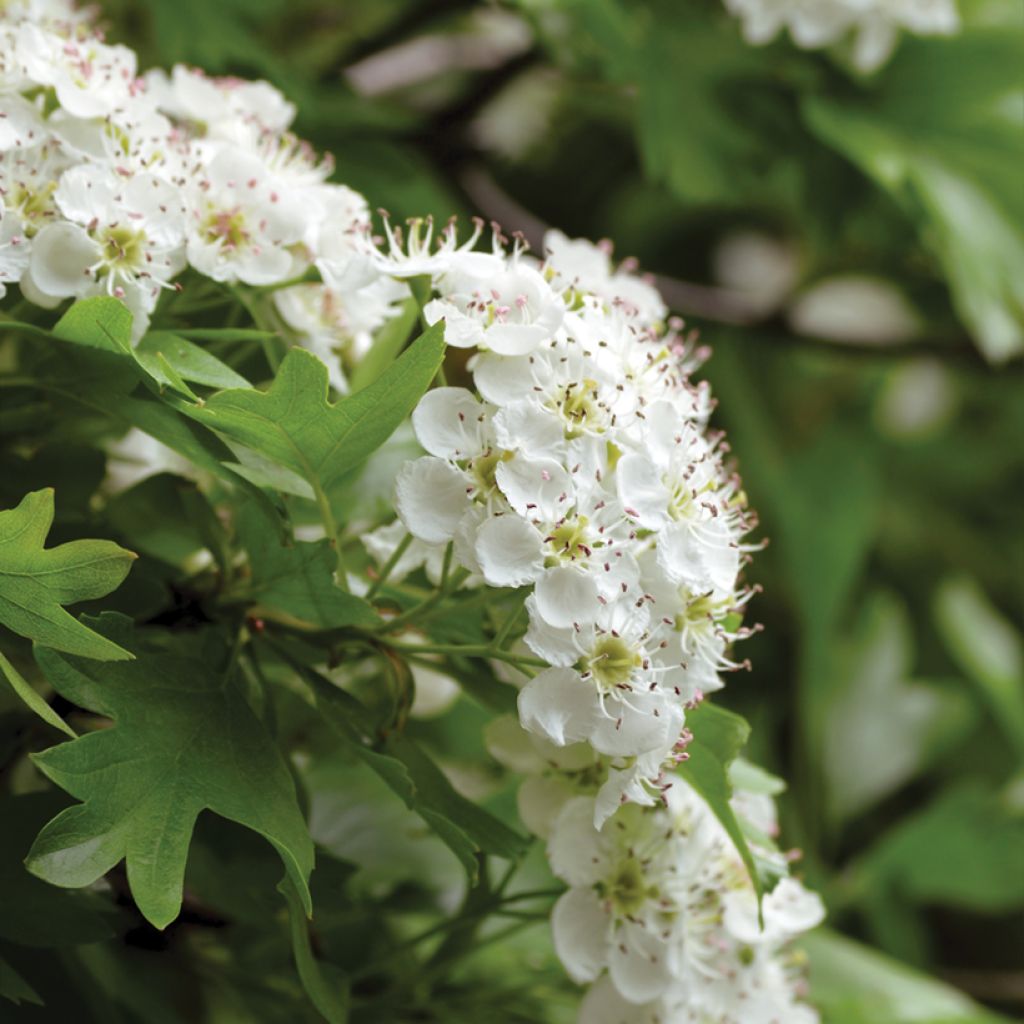

Crataegus monogyna - Hawthorn
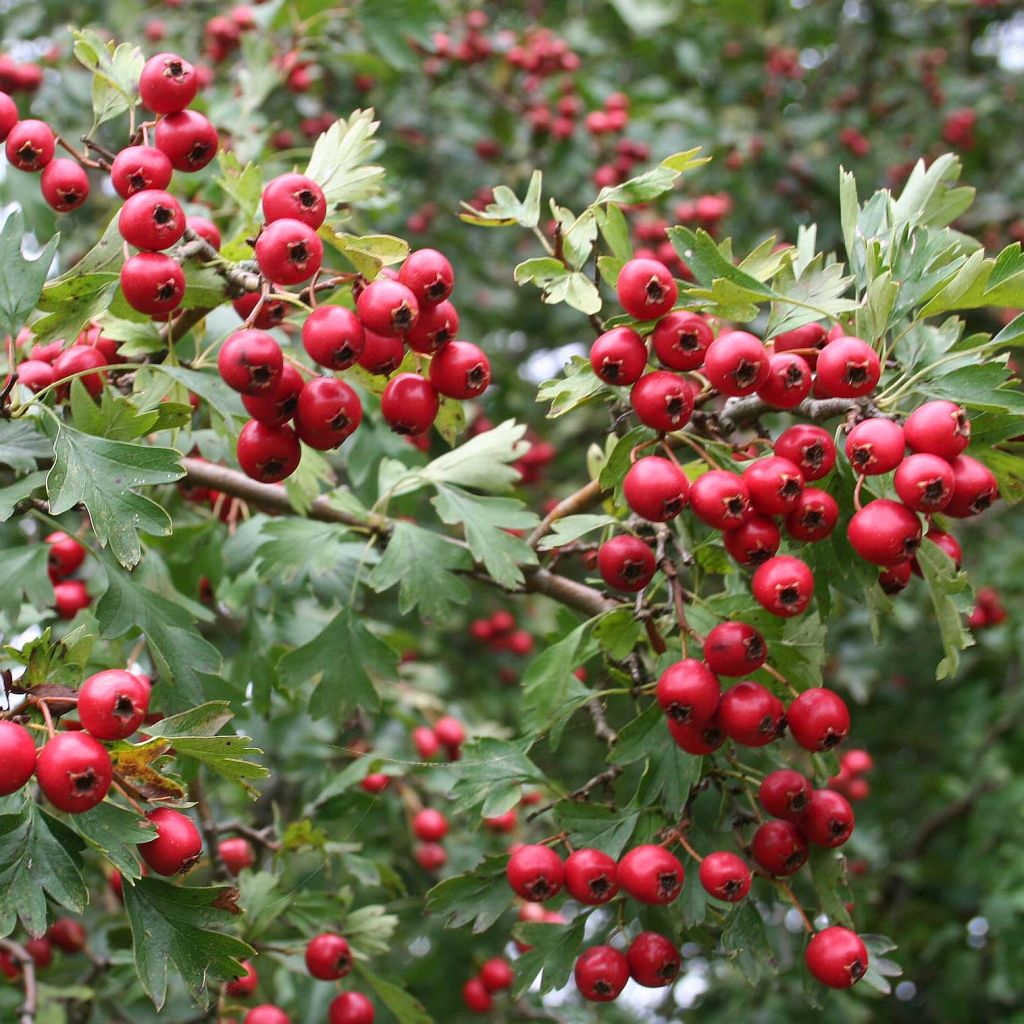

Crataegus monogyna - Hawthorn
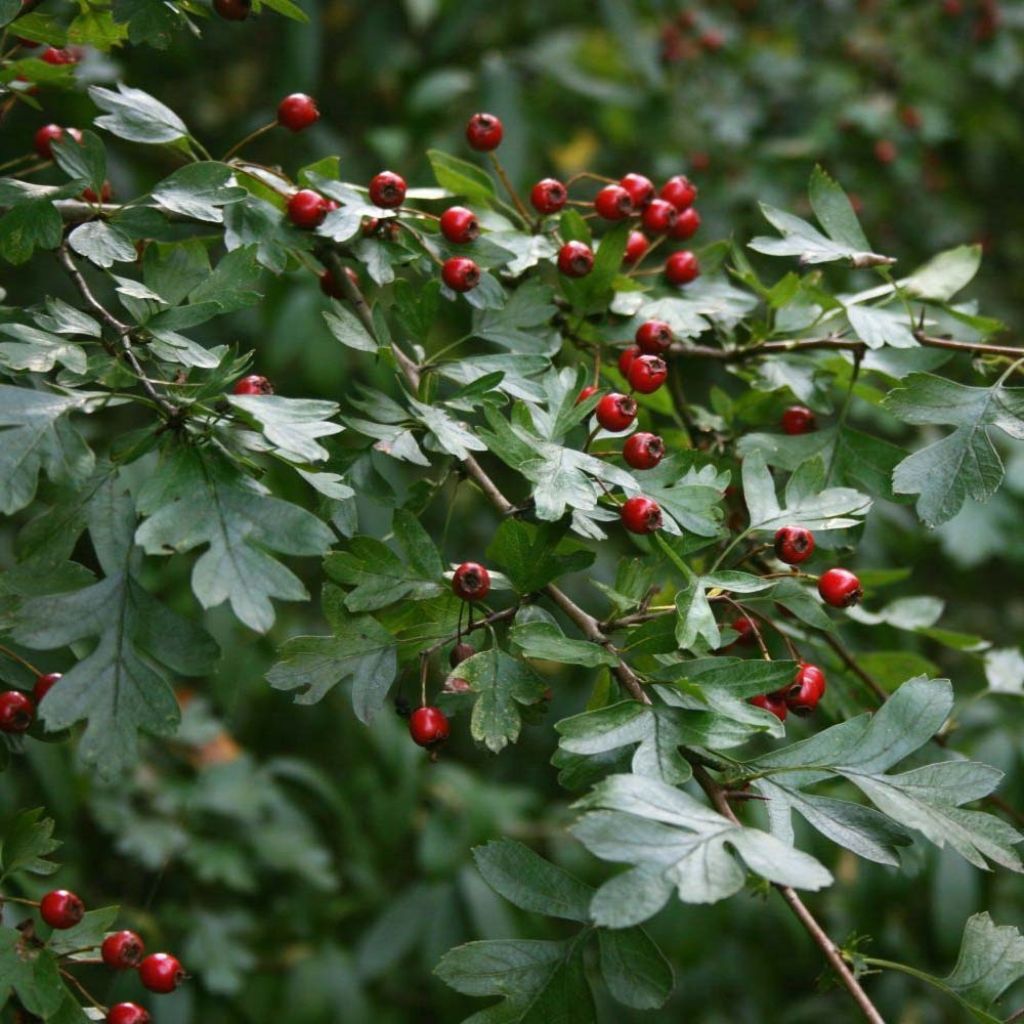

Crataegus monogyna - Hawthorn
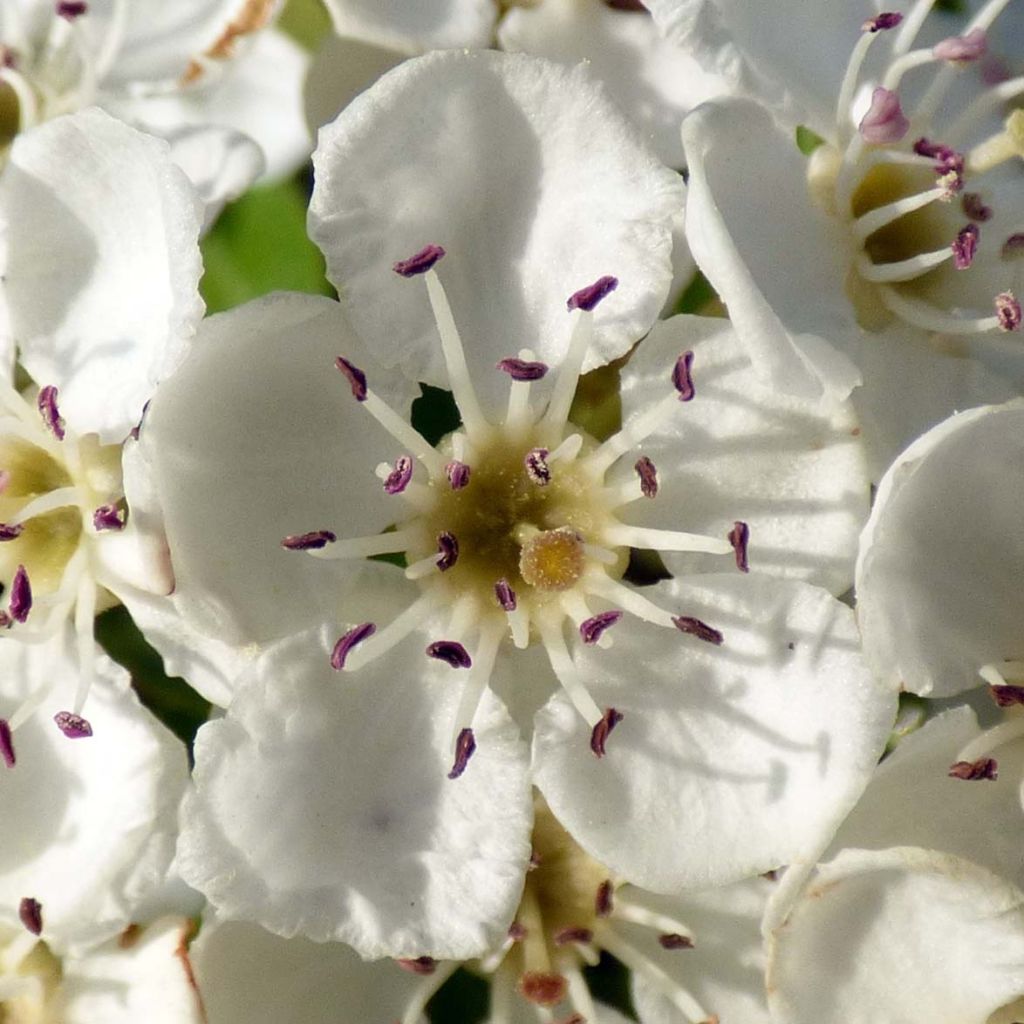

Crataegus monogyna - Hawthorn
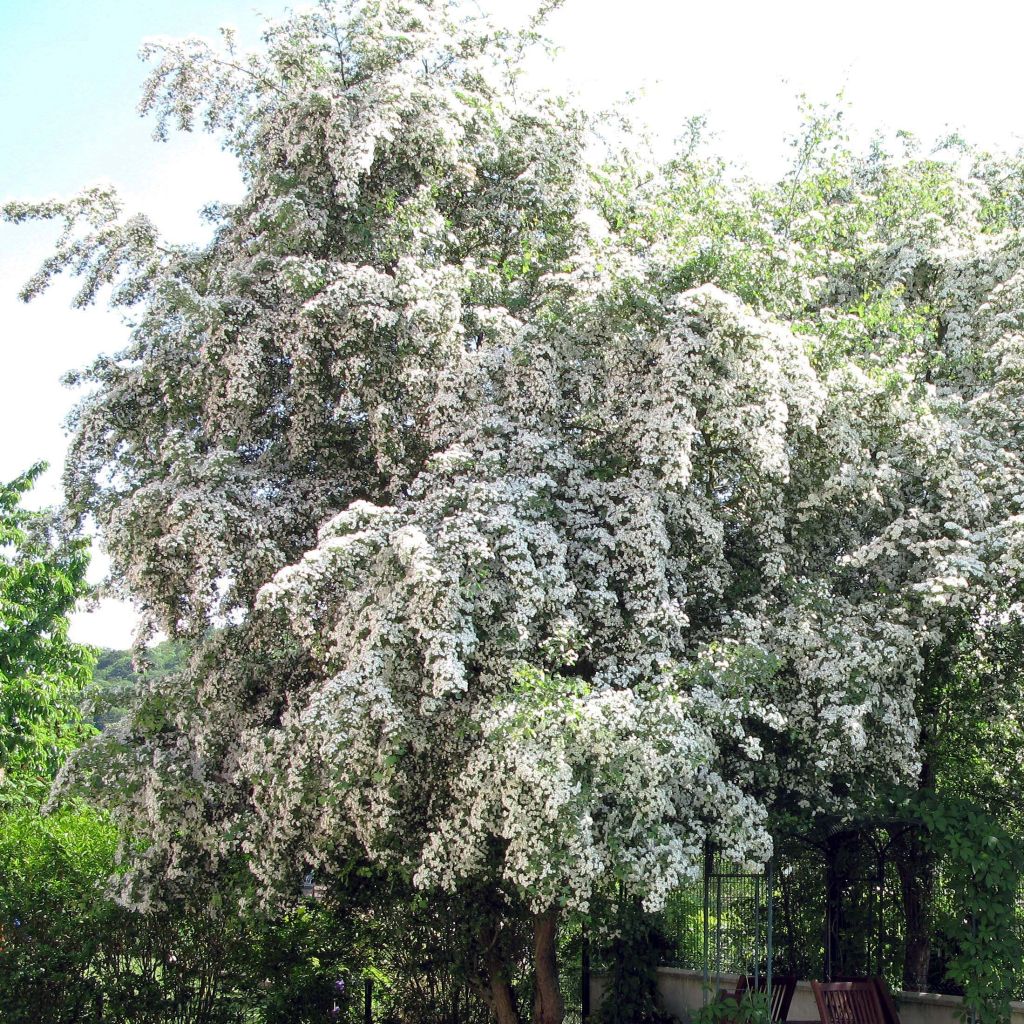

Crataegus monogyna - Hawthorn
Crataegus monogyna - Hawthorn
Crataegus monogyna
Hawthorn
This item cannot be shipped to the selected country
Delivery charge from €5.90
Delivery charge from €5.90
Delivery charge from €5.90
More information
Schedule delivery date,
and select date in basket
This plant carries a 24 months recovery warranty
More information
We guarantee the quality of our plants for a full growing cycle, and will replace at our expense any plant that fails to recover under normal climatic and planting conditions.
From €5.90 for pickup delivery and €6.90 for home delivery
Express home delivery from €8.90.
From €5.90 for pickup delivery and €6.90 for home delivery
Express home delivery from €8.90.
From €5.90 for pickup delivery and €6.90 for home delivery
Express home delivery from €8.90.
Does this plant fit my garden?
Set up your Plantfit profile →
Description
The Crataegus monogyna or Hawthorn is a tree with an upright and rounded, compact habit. The bark of the trunk of this tree is grey and then brown and scaly. The short stems are spiny and dark purple. Flowering takes place in May. It offers highly scented white flowers, gathered in 6 to 12 flowers in dense and flat corymbs. The corollas of the flowers consist of 5 rounded petals and numerous stamens with light pink anthers turning purple. The flowers measure from 10 to 20mm (0.8in) in diameter. In September-October, red fruits with a single stone called "haws" appear, measuring from 6 to 10mm (0.4in) long. They are spherical in shape. These berries are consumed by birds.
The foliage of the Hawthorn is alternately arranged and deciduous. It has simple leaves that are 2 to 5cm (2in) long, oval in shape, and composed of 5 to 7 lobes. The toothed leaves are bright green with a whitish underside.
This is a tree that can live for 500 years and measure between 4 and 10m (13 and 32 ft) in height. Easy to grow, Crataegus monogyna adapts well to any well-drained soil, even limestone, in a sunny or semi-shaded location. Not demanding, it will be happy with a balanced pruning in February.
This very hardy tree is native to Europe. It can be found in deciduous or mixed forests, in open woods, or in open terrain (meadow). This ornamental plant is ideal for hedges.
It is a tree that was once associated with May 1st. It was used as a soothing agent to treat gout and pleurisy in the Middle Ages. Be careful though, as it can cause cardiovascular disorders. Its wood is used for heating, formerly for metal parts and in small carpentry.
The term monogyna comes from the Latin word "monogunus", which means "with a single style". This criterion distinguishes this variety from Crataegus laevigata, which has 2 or 3 styles (pistils) and therefore 2 or 3 stones in the fruit.
Report an error about the product description
Crataegus monogyna - Hawthorn in pictures
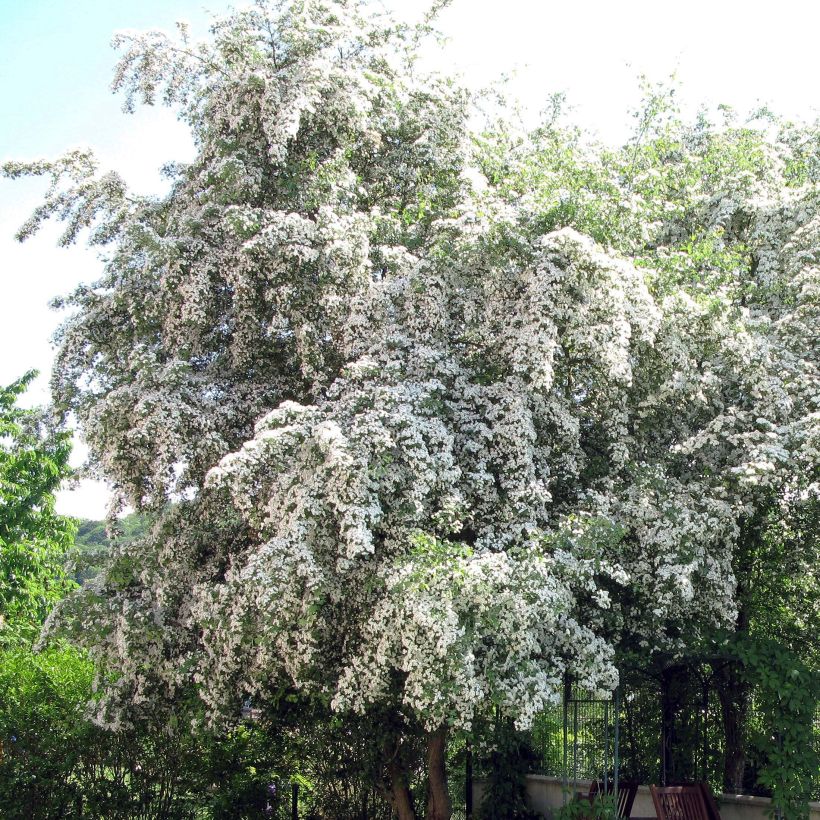

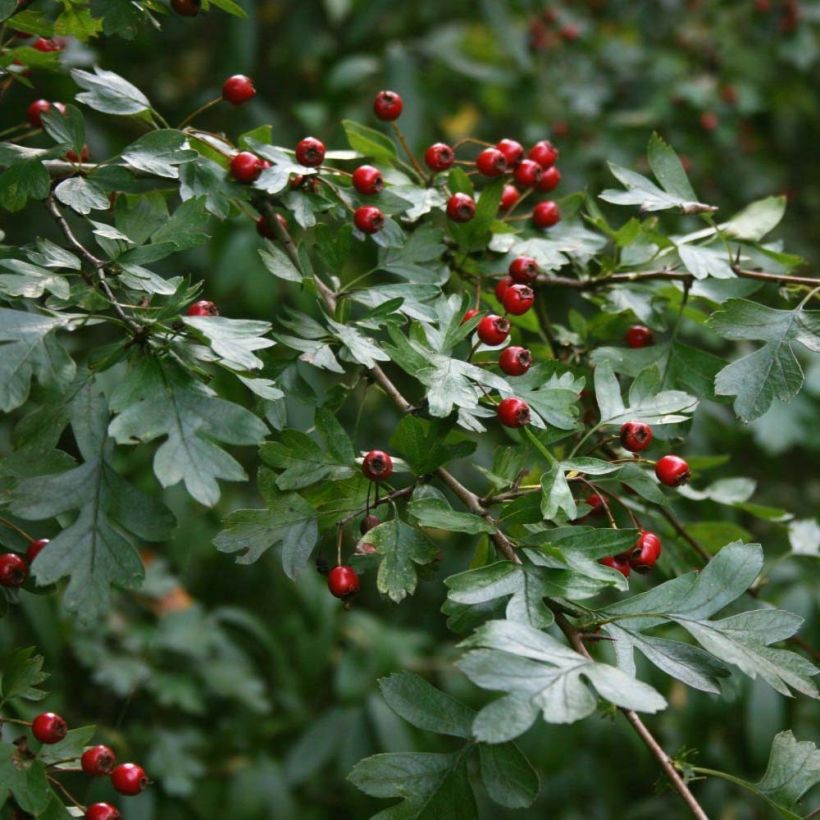



Plant habit
Flowering
Foliage
Botanical data
Crataegus
monogyna
Rosaceae
Hawthorn
Central Europe
Other Hawthorn Crataegus
Planting and care
Crataegus monogyna grows in a sunny or semi-shady location. Plant it in dry, warm and well-drained, limestone-rich soil. After flowering or in autumn, prune informal hedges and remove the awkward or tangled stems that compromise the proper habit of the tree in February-March or August-September. Hawthorn can be affected by caterpillars, aphids, rot, rust, and powdery mildew. It is particularly susceptible to fire blight, which can be a hindrance to planting it near apple and pear orchards. The Crataegus monogyna is best planted in autumn in any well-drained soil, even limestone, in a sunny or semi-shady position. Not demanding, it will manage with a pruning for balance in February. Trim the overly long branches to maintain a harmonious habit.
Planting period
Intended location
Care
-
, onOrder confirmed
Reply from on Promesse de fleurs
Hedge shrubs
Haven't found what you were looking for?
Hardiness is the lowest winter temperature a plant can endure without suffering serious damage or even dying. However, hardiness is affected by location (a sheltered area, such as a patio), protection (winter cover) and soil type (hardiness is improved by well-drained soil).

Photo Sharing Terms & Conditions
In order to encourage gardeners to interact and share their experiences, Promesse de fleurs offers various media enabling content to be uploaded onto its Site - in particular via the ‘Photo sharing’ module.
The User agrees to refrain from:
- Posting any content that is illegal, prejudicial, insulting, racist, inciteful to hatred, revisionist, contrary to public decency, that infringes on privacy or on the privacy rights of third parties, in particular the publicity rights of persons and goods, intellectual property rights, or the right to privacy.
- Submitting content on behalf of a third party;
- Impersonate the identity of a third party and/or publish any personal information about a third party;
In general, the User undertakes to refrain from any unethical behaviour.
All Content (in particular text, comments, files, images, photos, videos, creative works, etc.), which may be subject to property or intellectual property rights, image or other private rights, shall remain the property of the User, subject to the limited rights granted by the terms of the licence granted by Promesse de fleurs as stated below. Users are at liberty to publish or not to publish such Content on the Site, notably via the ‘Photo Sharing’ facility, and accept that this Content shall be made public and freely accessible, notably on the Internet.
Users further acknowledge, undertake to have ,and guarantee that they hold all necessary rights and permissions to publish such material on the Site, in particular with regard to the legislation in force pertaining to any privacy, property, intellectual property, image, or contractual rights, or rights of any other nature. By publishing such Content on the Site, Users acknowledge accepting full liability as publishers of the Content within the meaning of the law, and grant Promesse de fleurs, free of charge, an inclusive, worldwide licence for the said Content for the entire duration of its publication, including all reproduction, representation, up/downloading, displaying, performing, transmission, and storage rights.
Users also grant permission for their name to be linked to the Content and accept that this link may not always be made available.
By engaging in posting material, Users consent to their Content becoming automatically accessible on the Internet, in particular on other sites and/or blogs and/or web pages of the Promesse de fleurs site, including in particular social pages and the Promesse de fleurs catalogue.
Users may secure the removal of entrusted content free of charge by issuing a simple request via our contact form.
The flowering period indicated on our website applies to countries and regions located in USDA zone 8 (France, the United Kingdom, Ireland, the Netherlands, etc.)
It will vary according to where you live:
- In zones 9 to 10 (Italy, Spain, Greece, etc.), flowering will occur about 2 to 4 weeks earlier.
- In zones 6 to 7 (Germany, Poland, Slovenia, and lower mountainous regions), flowering will be delayed by 2 to 3 weeks.
- In zone 5 (Central Europe, Scandinavia), blooming will be delayed by 3 to 5 weeks.
In temperate climates, pruning of spring-flowering shrubs (forsythia, spireas, etc.) should be done just after flowering.
Pruning of summer-flowering shrubs (Indian Lilac, Perovskia, etc.) can be done in winter or spring.
In cold regions as well as with frost-sensitive plants, avoid pruning too early when severe frosts may still occur.
The planting period indicated on our website applies to countries and regions located in USDA zone 8 (France, United Kingdom, Ireland, Netherlands).
It will vary according to where you live:
- In Mediterranean zones (Marseille, Madrid, Milan, etc.), autumn and winter are the best planting periods.
- In continental zones (Strasbourg, Munich, Vienna, etc.), delay planting by 2 to 3 weeks in spring and bring it forward by 2 to 4 weeks in autumn.
- In mountainous regions (the Alps, Pyrenees, Carpathians, etc.), it is best to plant in late spring (May-June) or late summer (August-September).
The harvesting period indicated on our website applies to countries and regions in USDA zone 8 (France, England, Ireland, the Netherlands).
In colder areas (Scandinavia, Poland, Austria...) fruit and vegetable harvests are likely to be delayed by 3-4 weeks.
In warmer areas (Italy, Spain, Greece, etc.), harvesting will probably take place earlier, depending on weather conditions.
The sowing periods indicated on our website apply to countries and regions within USDA Zone 8 (France, UK, Ireland, Netherlands).
In colder areas (Scandinavia, Poland, Austria...), delay any outdoor sowing by 3-4 weeks, or sow under glass.
In warmer climes (Italy, Spain, Greece, etc.), bring outdoor sowing forward by a few weeks.

































